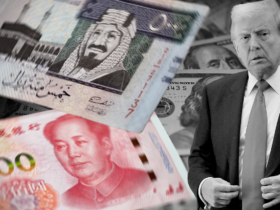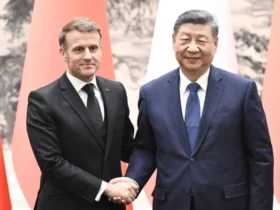Thailand has a decision to make.
Thailand has a decision to make.
By Mehmet Enes Beşer
For decades, Thailand’s economic self has been synonymous with turquoise waters, golden shrines, and night bazaars that glow. Tourism has been the crown jewel and crutch of Thailand’s GDP for decades, accounting for up to 20% of the economy in high-season years. But with the post-pandemic world—and ever-intensifying global trends in energy, tech, and climate—the shortcomings of this model have been brutally exposed. Tourism is inherently unstable, vulnerable to external shocks, and simply not geared towards providing long-term national stability. What Thailand needs now is not another resort, but a courageous transition. And that transition directly points to the electric vehicle (EV) industry.
The numbers tell a compelling story. Thailand is already the largest Southeast Asian vehicle manufacturer and among the world’s top ten producers. Thailand’s industrial foundation offers a huge advantage to reposition itself as an electric vehicle production hub. But the EV revolution is more than an industrial advance—it is a remake of structure. It is a worldwide shift in the building of economies, energy consumption, and value chain structure. If Thailand seizes the initiative, it can itself be a hub of strategic significance in the emerging green economy. But if not, then Thailand will lose ground as the globe gets run—that is literally run, rather than powered—on batteries rather than on capricious tourists or fossil fuels.
The global COVID-19 crisis proved a wake-up call. With countries locking their doors and their airlines shutting down for lack of international air travel, Thai commerce collapsed worse than elsewhere in Asia. The collapse of the tourist industry revealed the weakness of relying on service activities associated with external mobility and voluntary expenditure. And although visitor numbers have since recovered, the underlying risk remains: an economic downturn in China, a new mutation of the pandemic, or geopolitics tensions can all be sufficient to upset tourist flows overnight. In addition, tourism creates little productivity gains, is spread unevenly, and tends to generate low-paid, low-skilled jobs. By contrast, EV production provides a way forward for high-value industrialization, innovation, and integration into the future global supply chain.
The Thai government has seen the potential and embarked on ambitious plans to be a regional EV hub leader. Promotional incentives for EV buyers and producers, tax concessions, and plans to develop the infrastructure base—in the form of nationwide charging stations—are already underway. Foreign mass producers, including Chinese giants BYD and Great Wall Motors, have committed billion-dollar investments in Thai factories. They are not just symbolic expressions. They are signals of confidence in Thailand’s manufacturing capabilities and its location at the heart of ASEAN, a group of over 600 million consumers and growing green sensitivity.
But it will require more than money to make ambition happen. It calls for strategic foresight, institutional transformation, and human capital redesign. The EV economy is complicated. It is anything from the mining of lithium and rare earths to making batteries, software coding, installation of charging points, and recycling. Thailand must develop a synergistic policy bundle underpinning not just assembly lines, but upstream and downstream innovation as well. This entails investing in R&D, establishing vocational training schemes tailored to EV technologies, and promoting collaborations between local firms and foreign investors beyond assembly to knowledge transfer.
Thailand also should not only aim to be a subcontractor to someone else’s value chain. The real payoff is developing homegrown expertise—in batteries, mobility software, and integrating renewables—so the nation can capture more value share and chart its own industrial course. That also means protecting its nascent EV industry from being swamped by foreign incursion, while continuing to maintain an open atmosphere that attracts needed capital and expertise. This is a delicate balance but one that is essential.
Not less important is political will to continue long-term industrial policy in a nation regularly burdened with political instability and policy discontinuity. A successful EV transition strategy must be disembedded from short-term electoral politics and embedded within the national development agenda as a cross-party priority. Or else, the choice is stagnation: a patchwork, spasmodic industrial change that will be overtaken by regional rivals like Vietnam or Indonesia, both of which are themselves actively positioning in the EV space.
Critically, such a shift towards EVs must also be green and equitable. To establish a green industry on unsustainable modes of practice—such as unregulated mining or careless e-waste disposal—would be to repeat the same old development shortcomings in new form. Thailand is capable of more: show that a green industrial revolution can be a driver of inclusive growth, social mobility, and environmental integrity.
Conclusion
Thailand has a decision to make. One leads to the snug comfort of a tourist-based economy sustained by world travel fancies and vacation holidays. The other bespeaks a future unknown but to re-invention—an economy based in high-technology production, ecological responsibility, and world leadership. The electric automobile business is not a magic bullet, but it’s a handy fulcrum. It is the kind of long-term investment that can bring productivity, quality employment, export diversification, and environmental reputation. It is, in short, a future.
Tourism won’t go away. It will continue to be a cultural asset and an economic top-up. But it can’t bear the burden of national development on its own. The world is transforming, and so too must Thailand’s economic vision. By putting the EV sector at the heart of its growth plan, Thailand can move from being a destination for leisure to being a destination for innovation. It can move from selling sunsets to selling solutions. And in the process, it can finally shed the boom-and-bust risk of tourism and anchor its prosperity on the sectors that will shape the century ahead.

















Leave a Reply